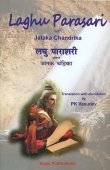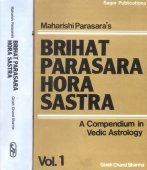Trikona, Tri-kona, Trikoṇa: 16 definitions
Introduction:
Trikona means something in Buddhism, Pali, Hinduism, Sanskrit, Marathi. If you want to know the exact meaning, history, etymology or English translation of this term then check out the descriptions on this page. Add your comment or reference to a book if you want to contribute to this summary article.
Images (photo gallery)
In Hinduism
Yoga (school of philosophy)
Source: Wisdom Library: YogaTrikoṇa (त्रिकोण) is a Sanskrit word referring to a “triangle”. It is used in Yoga.

Yoga is originally considered a branch of Hindu philosophy (astika), but both ancient and modern Yoga combine the physical, mental and spiritual. Yoga teaches various physical techniques also known as āsanas (postures), used for various purposes (eg., meditation, contemplation, relaxation).
Purana and Itihasa (epic history)
Source: Cologne Digital Sanskrit Dictionaries: The Purana IndexTrikoṇa (त्रिकोण).—One of the ten Pīṭhas for images, in the shape of a trident.*
- * Matsya-purāṇa 262. 7, 12, 18.

The Purana (पुराण, purāṇas) refers to Sanskrit literature preserving ancient India’s vast cultural history, including historical legends, religious ceremonies, various arts and sciences. The eighteen mahapuranas total over 400,000 shlokas (metrical couplets) and date to at least several centuries BCE.
Shaktism (Shakta philosophy)
Source: Google Books: ManthanabhairavatantramTrikoṇā (त्रिकोणा) (Cf. Trirekha) or “triangle” is a name for the Goddess.—The goddess is both the Point [i.e., bindu], which in mythical terms is the liṅga, and the triangle [i.e., trikoṇa] that emerges from it. Her bent form represents the latter. Thus the Kumārikākhaṇḍa says that this triangle is the face of the goddess who emerges from the Liṅga. In some places she is called Triangle—Trikoṇā. Accordingly, she is also commonly called Vakrā, which literally means ‘crooked’, or Vakrikā—‘little Vakrā’. These names implicitly refer to the Triangle, which is her sacred geometric form as the Yoni, the womb of emanation.

Shakta (शाक्त, śākta) or Shaktism (śāktism) represents a tradition of Hinduism where the Goddess (Devi) is revered and worshipped. Shakta literature includes a range of scriptures, including various Agamas and Tantras, although its roots may be traced back to the Vedas.
Ganitashastra (Mathematics and Algebra)
Source: archive.org: Science And Technology In Medievel India (Math)Trikoṇa (त्रिकोण) refers to a “triangle” as described in the Kṣetragaṇitaśāstra, as mentioned in A. Rahman’s Science and Technology in Medievel India: A bibliography of source materials in Sanskrit, Arabic and Persian.—Ancient and medieval India produced a wide range of scientific manuscripts and major contributions lie in the field of medicine, astronomy and mathematics, besides covering encyclopedic glossaries and technical dictionaries.—The Kṣetragaṇita-śāstra is a Sanskrit mathematical treatise dealing with the art of measuring lands, containing well-defined and established technical terms [e.g., Trikoṇa] wanted for practical use in the Tamil language.

Ganitashastra (शिल्पशास्त्र, gaṇitaśāstra) refers to the ancient Indian science of mathematics, algebra, number theory, arithmetic, etc. Closely allied with astronomy, both were commonly taught and studied in universities, even since the 1st millennium BCE. Ganita-shastra also includes ritualistic math-books such as the Shulba-sutras.
In Buddhism
Tibetan Buddhism (Vajrayana or tantric Buddhism)
Source: OSU Press: Cakrasamvara SamadhiTrikoṇa (त्रिकोण) refers to a “triangle”, according to the Guru Mandala Worship (maṇḍalārcana) ritual often performed in combination with the Cakrasaṃvara Samādhi, which refers to the primary pūjā and sādhanā practice of Newah Mahāyāna-Vajrayāna Buddhists in Nepal.—Accordingly, “In front, above that, (arising from) the letter Yaṃ, is an air mandala, Above that, (arising from) the letter Raṃ, is a fire mandala, (and) above (that) a triangle (trikoṇa) marked red Ra, three shaved heads, and a lotus vessel, Behold the five ambrosia and five lamps, distributed, etc., therein, Arising from the letters Buṃ Āṃ Jiṃ Khaṃ Hūṃ Lāṃ Māṃ Pāṃ Tāṃ Vaṃ”.

Tibetan Buddhism includes schools such as Nyingma, Kadampa, Kagyu and Gelug. Their primary canon of literature is divided in two broad categories: The Kangyur, which consists of Buddha’s words, and the Tengyur, which includes commentaries from various sources. Esotericism and tantra techniques (vajrayāna) are collected indepently.
Languages of India and abroad
Marathi-English dictionary
Source: DDSA: The Molesworth Marathi and English Dictionarytrikōṇa (त्रिकोण).—n (S) A trigon or triangle. 2 A triangular thing gen.
--- OR ---
trikōṇa (त्रिकोण).—a (S) Triangular.
Source: DDSA: The Aryabhusan school dictionary, Marathi-Englishtrikōṇa (त्रिकोण).—n A triangle. A triangular thing gen. a Triangular.
Marathi is an Indo-European language having over 70 million native speakers people in (predominantly) Maharashtra India. Marathi, like many other Indo-Aryan languages, evolved from early forms of Prakrit, which itself is a subset of Sanskrit, one of the most ancient languages of the world.
Sanskrit dictionary
Source: DDSA: The practical Sanskrit-English dictionaryTrikoṇa (त्रिकोण).—a. triangular, forming a triangle. (-ṇaḥ) 1 a triangle.
2) the vulva.
Trikoṇa is a Sanskrit compound consisting of the terms tri and koṇa (कोण).
Source: Cologne Digital Sanskrit Dictionaries: Shabda-Sagara Sanskrit-English DictionaryTrikoṇa (त्रिकोण).—n.
(-ṇaṃ) 1. The vulva. 2. A triangle. 3. Any triangular object. E. tri three, and koṇa a corner.
Source: Cologne Digital Sanskrit Dictionaries: Cappeller Sanskrit-English DictionaryTrikoṇa (त्रिकोण).—[adjective] triangular; [neuter] triangle.
Source: Cologne Digital Sanskrit Dictionaries: Monier-Williams Sanskrit-English Dictionary1) Trikoṇa (त्रिकोण):—[=tri-koṇa] [from tri] mf(ā)n. ([from] τρί-γωνον) triangular, [Mahābhārata xiv; Varāha-mihira’s Bṛhat-saṃhitā; Phetkāriṇī-tantra]
2) [v.s. ...] forming a triangle, [Varāha-mihira’s Bṛhat-saṃhitā]
3) [v.s. ...] n. a triangle, [Rāmatāpanīya-upaniṣad i, 29]
4) [v.s. ...] = ṇa-bhavana, [Varāha-mihira’s Bṛhat-saṃhitā; Varāha-mihira’s Bṛhajjātaka; Laghujātaka, by Varāha-mihira]
5) Trikoṇā (त्रिकोणा):—[=tri-koṇā] [from tri-koṇa > tri] f. Trapa bispinosa, [Nighaṇṭuprakāśa]
Source: Cologne Digital Sanskrit Dictionaries: Yates Sanskrit-English DictionaryTrikoṇa (त्रिकोण):—[tri-koṇa] (ṇaṃ) 1. n. The vulva; a triangle; any triangular thing.
[Sanskrit to German]
Sanskrit, also spelled संस्कृतम् (saṃskṛtam), is an ancient language of India commonly seen as the grandmother of the Indo-European language family (even English!). Closely allied with Prakrit and Pali, Sanskrit is more exhaustive in both grammar and terms and has the most extensive collection of literature in the world, greatly surpassing its sister-languages Greek and Latin.
Kannada-English dictionary
Source: Alar: Kannada-English corpusTrikōṇa (ತ್ರಿಕೋಣ):—[noun] having the form of a triangle; three-cornered; triangular.
--- OR ---
Trikōṇa (ತ್ರಿಕೋಣ):—
1) [noun] (geom.) a closed plane figure having three sides and three angles; a triangle.
2) [noun] a flat triangular piece, usu. of plastic, with straight edges, used in connection with a T-square for drawing perpendicular lines, geometric figures, etc.
3) [noun] any three-cornered or three-sided figure, object.
4) [noun] (astrol.) the imaginary the fifth and ninth houses from the Lagna house.
Kannada is a Dravidian language (as opposed to the Indo-European language family) mainly spoken in the southwestern region of India.
Nepali dictionary
Source: unoes: Nepali-English DictionaryTrikoṇa (त्रिकोण):—adj. triangular; three-cornered; n. 1. a triangle; 2. the vulva;
Nepali is the primary language of the Nepalese people counting almost 20 million native speakers. The country of Nepal is situated in the Himalaya mountain range to the north of India.
See also (Relevant definitions)
Starts with: Trikonabhavana, Trikonadhaman, Trikonaka, Trikonakadhipatyashodhana, Trikonakara, Trikonakunda, Trikonamandala, Trikonamiti, Trikonanta, Trikonapadma, Trikonapata, Trikonaphala, Trikonapura, Trikonastha, Trikonavrita.
Ends with: Mulatrikona, Tritrikona.
Full-text (+3): Tritrikona, Mulatrikona, Trikonaphala, Trikonabhavana, Tikoni, Tirakona, Parivrittatrikonasana, Utthitatrikonasana, Disampati, Dhama, Teja, Trishkona, Pithika, Bhagarupini, Mahakala, Trirekha, Vakra, Vamavarta, Ayodhya, Vakrika.
Relevant text
Search found 14 books and stories containing Trikona, Tri-kona, Trikoṇa, Tri-koṇa, Trikōṇa, Trikoṇā, Tri-koṇā, Tri-kōṇa; (plurals include: Trikonas, konas, Trikoṇas, koṇas, Trikōṇas, Trikoṇās, koṇās, kōṇas). You can also click to the full overview containing English textual excerpts. Below are direct links for the most relevant articles:
Shat-cakra-nirupana (the six bodily centres) (by Arthur Avalon)
Garga Samhita (English) (by Danavir Goswami)
Verse 2.21.22 < [Chapter 21 - The Rāsa-dance Pastime]
Vishnudharmottara Purana (Art and Architecture) (by Bhagyashree Sarma)
3. Site Selection for Temple Building < [Chapter 4 - Temple Building]
The Matsya Purana (critical study) (by Kushal Kalita)
Part 3 - Art in the Matsyapurāṇa < [Chapter 7 - Art and Architecture in the Matsyapurāṇa]
Part 2.2 - Temple (prāsāda) architecture in the Matsyapurāṇa < [Chapter 7 - Art and Architecture in the Matsyapurāṇa]
The Shiva Purana (by J. L. Shastri)
Chapter 8 - Description of the Hell (naraka) < [Section 5 - Umā-Saṃhitā]
The Agni Purana (by N. Gangadharan)
Related products



